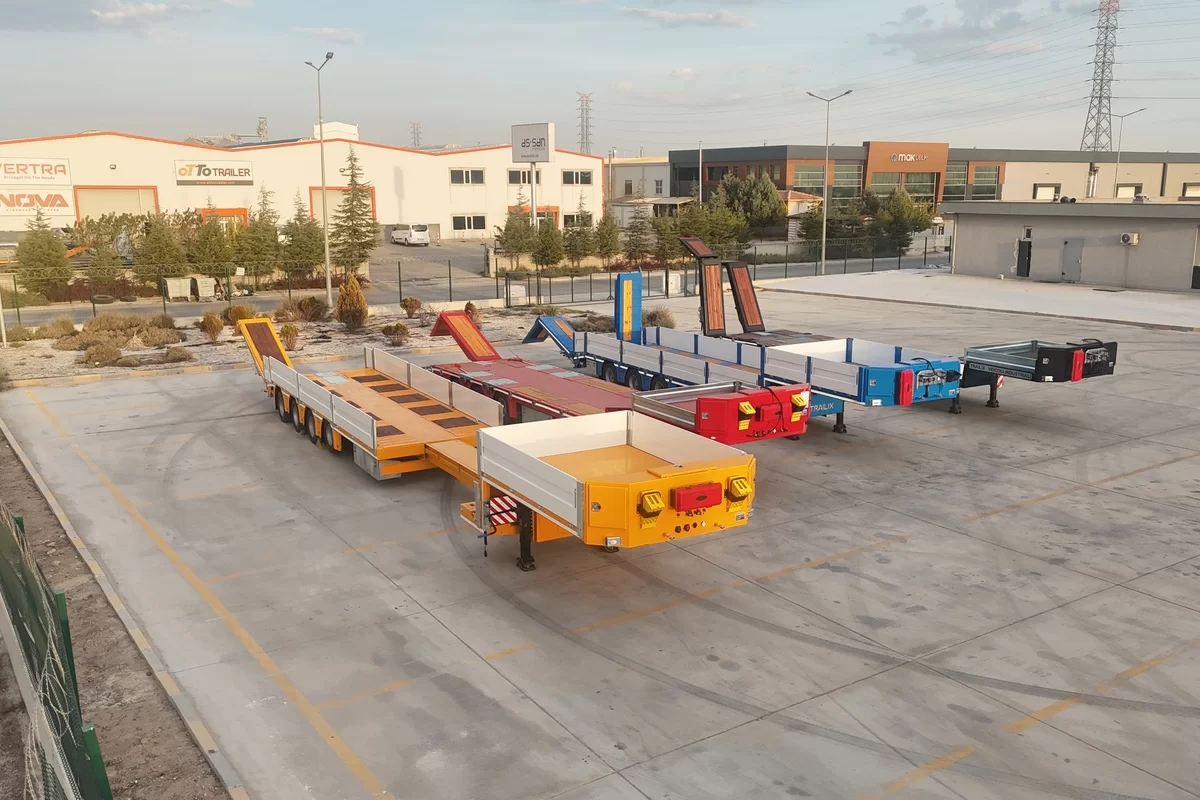
Title: Lowbed Trailers – Heavy‑Duty Transport for Oversized & Heavy Machinery
Meta Description: Explore the capabilities of high‑performance lowbed trailers (low‑loader/low‑bed semi‑trailers) designed for transporting heavy equipment and oversized loads with confidence and efficiency.
What is a Lowbed Trailer?
A lowbed trailer (also known as a low‑loader or low‑bed semi‑trailer) is a specialised semi‑trailer with a very low deck height, often achieved by drop‑deck or double‑drop configurations. This low deck allows the transport of tall or heavy machinery that would exceed height limits on standard trailers.
Because the deck is lower, the centre of gravity for the transported load is reduced, improving stability and enabling transport of bulky equipment under bridges or through tunnels.
Key Features of Quality Lowbed Trailers
When selecting a lowbed trailer, here are the main features to look for:
-
Low deck height / drop‑deck design: Ensures that tall or heavy equipment can be loaded and transported without exceeding height restrictions.
-
Detachable gooseneck or ramp loading: Many lowbeds offer a removable gooseneck (RGN) or built‑in ramps to allow heavy machinery to drive on/off easily.
-
High payload capacity and multi‑axle configurations: Lowbed trailers often come in 2‑axle, 3‑axle, up to 8‑axle versions designed for 20 tons up to 150 tons or more.
-
Heavy‑duty construction & materials: Use of high‑tensile steel, reinforced beams, durable welding, and robust suspension systems.
-
Advanced suspension and steering systems: Some models include pendle‑axles, steerable axles, hydraulic or air suspension to enhance manoeuvrability and load distribution.
-
Load securing features: Tie‑down rings, lashing points, stake pockets, strong ramps and surfaces built for heavy equipment.
-
Compliance with regulations & safety systems: Brakes (EBS, ABS), underride guards, proper lighting and signage for heavy/oversize transport.
Benefits of Using a Lowbed Trailer
-
Transport of oversized/heavy loads – Heavy machinery, construction equipment, transformers, wind turbine parts etc can be moved safely.
-
Reduced height & improved stability – The low deck height helps maintain stability and fit under height restrictions.
-
Loading flexibility – With detachable gooseneck or ramps, equipment can be loaded easily from front or rear.
-
Customisable to application – Many manufacturers offer custom lengths, axles, ramp configurations and accessories to suit specific loads.
-
Better fleet utilisation – Investing in a dedicated lowbed trailer allows a business to handle oversized loads in‑house rather than subcontract more often.
Typical Applications & Industries
Lowbed trailers are widely used in:
-
Construction & civil engineering – for excavators, bulldozers, cranes, large concrete beams.
-
Mining & heavy industry – for heavy haulage of mining equipment, large vessels or modules.
-
Wind & energy sector – transporting blades, nacelles, towers with very large dimensions.
-
Infrastructure & transport – oversized road/rail components, bridge segments, industrial tanks.
-
Agricultural/forestry – large machinery, harvesters, loaders that exceed standard trailer limits.
How to Choose the Right Lowbed Trailer
Before purchasing or specifying a lowbed trailer, consider the following:
-
What loads you’ll transport – Know the type, weight, dimensions, and special features of the equipment.
-
Legal/regulatory constraints – Maximum height, width, axle load rules in your region (Türkiye, EU, Türkiye‑specific).
-
Axle configuration & payload – Choose number of axles appropriate to the load and to distribute weight to meet road regulations.
-
Loading/unloading method – Do you need detachable gooseneck, rear ramps, side loading, hydraulic assistance?
-
Deck length & width – Ensure the deck accommodates the equipment; if loads vary, consider extendable or modular deck.
-
Suspension & steering features – For manoeuvrability, road‑compliance, and to ease route planning (tight corners, uneven terrain).
-
Durability & maintenance – High‑quality steel, good suspension, easy servicing, reliable braking systems.
-
Custom options & flexibility – If your operations change, a trailer that can adapt will add value.
